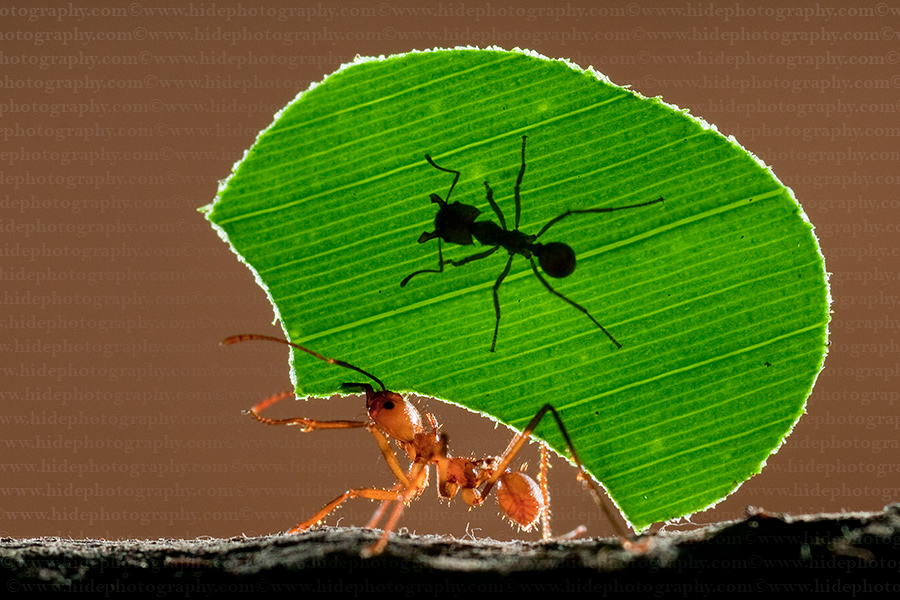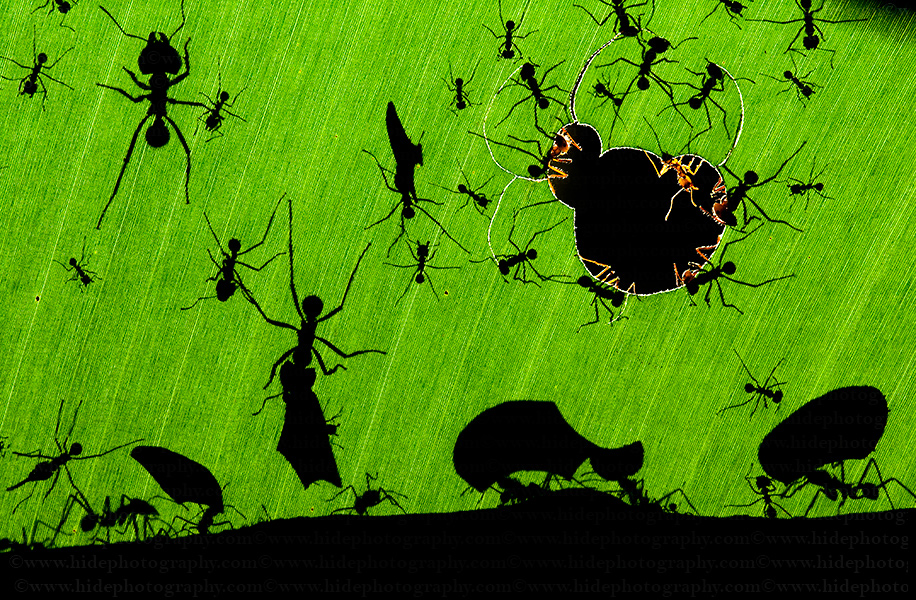Interactions
Atta cephalotes are eusocial organisms but have very little interaction with other organisms outside their species. Many of their daily interactions are within the same species from the same colony. But one of the more harmful interactions with other organisms include one with a parasitic fly. While the foraging ants are carrying back their bits of leaves, one would notice a fly sitting on the leaf with them. These flies then lay their eggs near the neck of the ants. Once the ant enters the colony, the eggs hatch and eat the tissue of the ant, and then infest the colony. In order to prevent this, smaller worker ants will sit on top of the piece of leaf and fight off the flies while the larger ants carry both ants and the leaves back to the garden (Hölldobler & Wilson, 2011).
The ants feed themselves with a fungal garden grown in their
chambers. They have a symbiotic relationship with fungus. The fungus
is fed bits of leaves carried by the worker ants and given a drop of
anal fluid. The fungus then breaks down the cellulose that cannot be
broken down by the ants. The fungus provides xylan and starch for
the ants, while the ants provide a well conditioned environment for
the fungus. The fungus rarely ever produces a fruiting body, and
instead of hyphae, the fungus grows staphylae, a larger, swelled
hyphae. The fungus isn’t the only form of food provided to the ants,
worker ants while out foraging will feed on plant sap that serves as
“fuel” (Hölldobler & Wilson, 2011). The size of the bits of
leaves they carry depends on the size of the ant, the larger the
ant, the larger the bit of leaf. The ants are qued by the number of
workers returning to the nest without any bits with them. This tells
them if they need more workers to help with the breakdown of their
source (Burd, 2000). Queen ants will feed on trophic
eggs given to her by worker ants. These eggs will also be fed to the
fungal garden when it is first growing and the first larvae hatched
from the queen to start the colony.
The Atta cephalotes also use trafficking highways underground
and from the nest to efficiently move and store their food. From the
nest they will make trials up to 300 m long and about ten ants wide
clear of any debris to use as highways for bringing back bits of
leaves. They also use underground highways based on width and
smoothness. The larger the width and smoother the trail, the faster
the speed of the ant. Similar to human’s way of trafficking in
larger cities or on highways (Burd et al., 2002). These ants
present a similarity to vehicles on the highway. The ants noticeably
range in size. The largest ant is the leafcutter ant which is about
five times larger than the average worker ant.
Atta cephalote nests have the power of changing the
microclimate. With their well air conditioned nests the temperature
of the soil around their nests decrease exponentially while the
moisture of the soil increase exponentially. Leafcutter ants burn
through the same amount of vegetation as a cow one day. With the rate of vegetation being used, it’s
easy for the nest to lose its canopy, therefore, affecting the
amount of sunlight and possibly the temperature of the nest. Because
of these microclimate changes, plants may or may not germinate in
those areas, causing the environment to lose some plant vegetation,
and forcing the ants to travel further and further for their
resources.
Click here to view other organisms on our Multiple Organisms Homepage
Click here to return to the Homepage
Click here to continue to Facts

